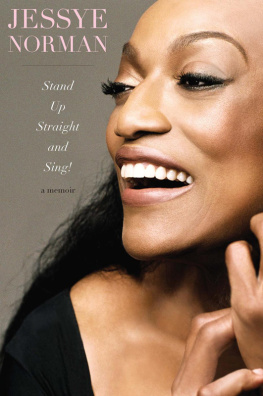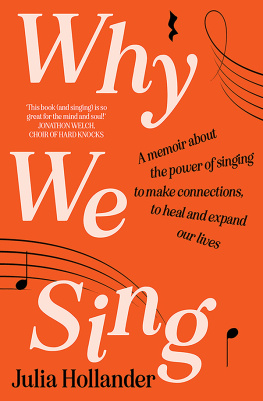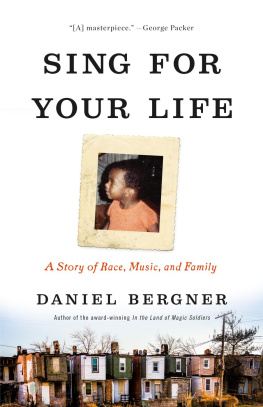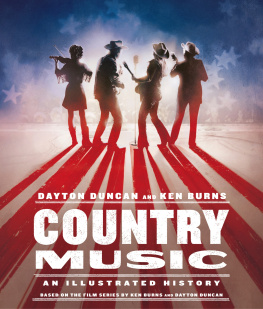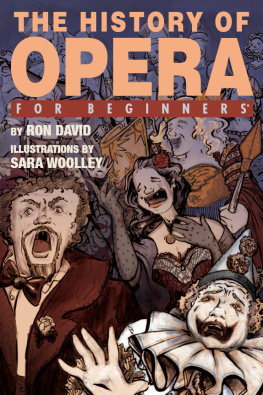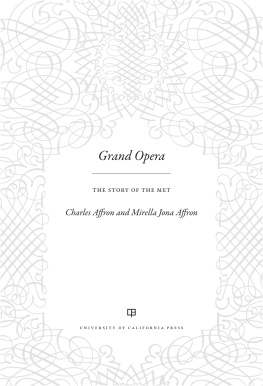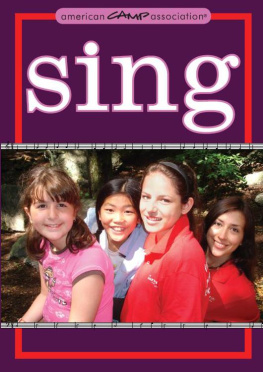Copyright 2014 by Jessye Norman
All rights reserved
For information about permission to reproduce selections from this book, write to Permissions, Houghton Mifflin Harcourt Publishing Company, 215 Park Avenue South, New York, New York 10003.
www.hmhco.com
The Library of Congress has cataloged the print edition as follows:
Norman, Jessye.
Stand up straight and sing! / Jessye Norman.
pages cm
Includes index.
ISBN 978-0-544-00340-8
1. Norman, Jessye. 2. Sopranos (Singers)United StatesBiography. I. Title.
ML420.N736A3 2014
782.1092dc23
[B]
2013046581
e ISBN 978-0-544-00338-5
v1.0514
All song translations Jessye Norman.
Do not reproduce without permission of author.
I am honored to dedicate this book first to my parents, Janie and Silas Norman Sr., then to my siblings, Elaine, Silas Jr., Howard, and our beloved angel, George.
And lastly to our big, bountiful family, with every single one of whom our ancestry is shared, as well as those who compose an extended, multitudinous group. As Richard Bach wrote:
The bond that links your true family is not one of blood, but of respect and joy in each others life.
Blest be the tie that binds.
Introduction
In the summer of 1972, at the first rehearsal of what became a thrilling concert performance of Aida with the Los Angeles Philharmonic at the Hollywood Bowl, I met a young soprano who was making her American operatic debut and about whom I had heard muchbut whose voice I had not heard at all. Friends who had had told me, Just wait! Fortunately I did not have to wait long; nor did I have to wait to discover that this brilliant young woman was well on her way to a fully realized career as one of the very rare sovereign artists.
Over the more than forty years since that day I have had the joy and privilege of making music with my friend, Jessye Norman. Indeed, we have evolved a simple and all-but-tacit language in our collaborative process so that we are able to react to one another instantly on stage. She is an extraordinarily dedicated artist, extremely disciplined, but at the same time deeply expressive, lively, and spontaneous in response to every detail demanded by the composer of whatever music is at hand. Our work has encompassed an especially diverse repertoire for voice and instrumentsopera, oratorio, and songs!dozens of small masterpieces of words and music for voice and piano; perhaps the most astonishing repertoire of all. Not every great composer wrote operas or oratorios but they all wrote songsglorious songs: Beethoven, Schubert, Strauss, Mahler, Wagner, Brahms, Ravel, Debussy, Poulenc, Berg, Schumann, Schoenberg, Wolf, Ives, Copland, to name a few, and of course, Anonymous, the most prolific of all, over many centuries, an incredibly vast collection of the worlds folksongs and spirituals.
All of these composers provided us with far too many memorable collaborations to describe in this short introduction. That may have to wait for my memoir! But the shortest possible list of my favorites would have to include:
- Our first Recital with Orchestra with the Chicago Symphony Orchestra, in which Jessye sang the entire program, just as she would in a recital with piano.
- Beethovens Missa Solemnis with the Vienna Philharmonic at the Salzburg Festival.
- Mahlers Second Symphony with the Vienna Philharmonic at the Salzburg Festival on the occasion of Jessyes Salzburg debut.
- Her performing as soloist in the first of what became an ongoing series of concerts with the Met Orchestra playing as a symphonic ensemble at Carnegie Hall.
- The time Jessye sang both Cassandra and Dido in the same performance of Les Troyens at the Met.
- The concert of Spirituals, with Kathleen Battle at Carnegie Hall.
- Strausss Vier letzte Lieder and Wagners Wesendonck Lieder on the same program with the Berlin Philharmonic.
- The rehearsals, performances, and recording sessions for Schoenbergs Erwartung.
- The recording sessions for Die Walkre, Parsifal, and songs of Beethoven, Wolf, Debussy, and Schoenberg.
- Lots of recitals, especially in Vienna, Salzburg, Chicago, and New Yorkand the unique Songbook series at Carnegie Hall.
Over the years at the Met, I was lucky to work with Jessye in dozens of exciting rehearsals and performances, starting with her unforgettable debut in Les Troyens on the opening night of the Metropolitans one hundredth anniversary season. The excitement never flagged as she gradually built her singular Met repertoire: Die Walkre, Parsifal, Tannhuser, Erwartung, Bluebeards Castle, Oedipus Rex, Ariadne auf Naxos, The Dialogues of the Carmelites, The Makropolus Case...
The book you hold in your hands is Jessyes latest work of art. Not a career chronicle like so many (and then I did...) but the story of her magnificent life written in her own wordsnot the words of a ghostwriter, and, of course, in her own voice as well. Her mastery of language goes hand-in-glove with her mastery of music and singing, and her work ethic is ideal! Would that it were a model for every singer.
In this fascinating memoir, you will feel Jessyes unique presence on every pageher passion, her sense of humor, and her full-scale zest for life. I recommend it as a must-read, not only for her legion of admirers but also for the layman, for students of every ageeveryone who cares about the artistic life.
James Levine
New York City
February 2014
Prelude
It was a beautiful autumn when I found myself in Europe for the very first time, in bustling, stylish Munich. While completing a masters degree in vocal performance at the University of Michigan, I had been among the students selected from around the country by a special committee of the United States Information Agency to participate in international music competitions. I was thrilled to be taking part in the prestigious Bayerischer Rundfunk Internationaler Musikwettbewerb, the Bavarian Radio International Music Competition. Julius, a great friend and fine pianist whom I knew from my undergraduate days at Howard University, had traveled with me as my accompanist. There was electricity in the air: the whole city seemed to be involved in the events at the Bavarian Radio. All of the performances during the competition were to be held before a live audience.
The country Julius and I had left behind for these few weeks was on fire. The assassination of Dr. Martin Luther King Jr. the previous spring had sparked riots all over the States. Classes at Berkeley had not taken place in months. Los Angeles, Detroit, and Newark were ablaze with the passion for peace and justice. Protesters marched, organized sit-ins, and took over administration buildings on college campuses. Attacks on Dr. Kings legacy were as vicious as the trained-to-kill dogs, fire hoses, and smoke bombs directed at American citizens exercising their civil rights. Those sworn to protect and serve stood quietly on the sidelines or, worse still, joined the chorus of hate emanating from those sidelines.
The war in Vietnam had surely and steadily lost support, and no half-truths or presidential speeches beginning with the words My fellow Americans could douse the flames of revolution visible just across the street from the White House, in Lafayette Square. The country roared in opposition to the status quo. Europe was no less a hot spot, particularly in Paris, where student protests against university tuition payments and other concerns made for significant unrest. The world was most certainly in a state of evolution and revolution.
I had participated in mass meetings and protest marches, carrying signs exhorting NO JUSTICE, NO PEACE, and lending my voice to the song concluding almost every gathering, Pete Seegers We Shall Overcome. I understood that many organizations, with varying approaches to the fight for justice, were needed. No single civil rights group could channel every frustration, or rally everyone to stand tall in the face of those who would just as soon see us crawl away in defeat. Every voice needed to find its own place, its own platform from which the cry for freedom and equality could be heard.
Next page
